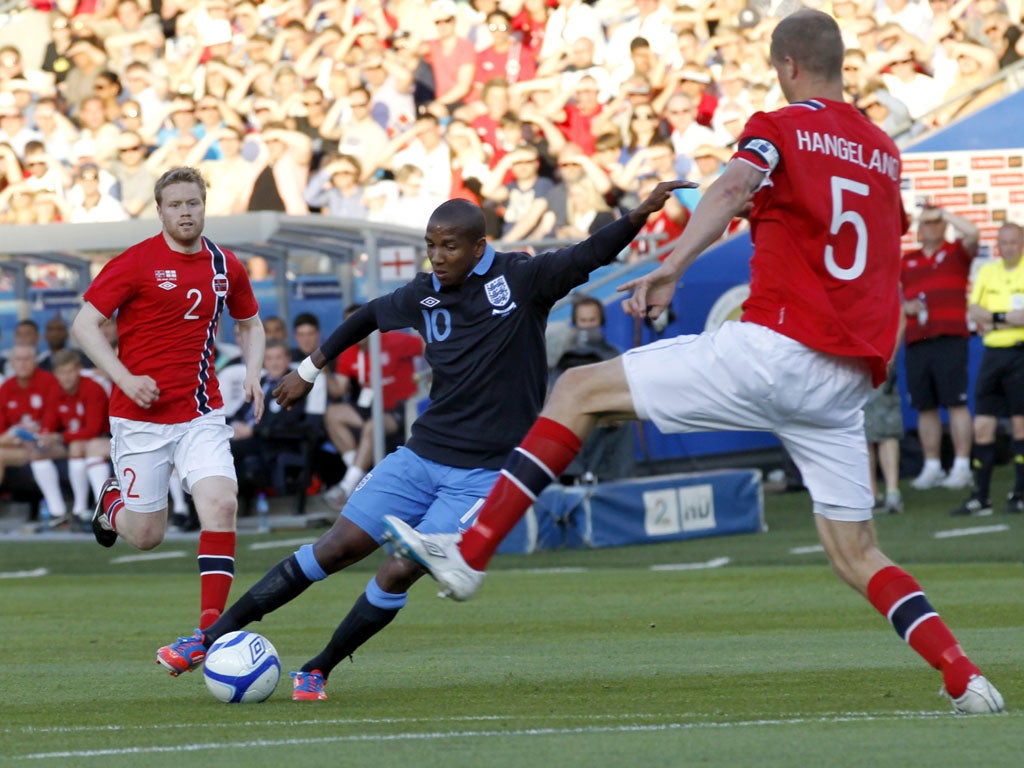Moving between the lines is essential to give England's 4-4-2 credibility
An over-rigid win over Norway showed up the scale of the 'work in progress' that the national manager faces, writes Jack Pitt-Brooke

Your support helps us to tell the story
From reproductive rights to climate change to Big Tech, The Independent is on the ground when the story is developing. Whether it's investigating the financials of Elon Musk's pro-Trump PAC or producing our latest documentary, 'The A Word', which shines a light on the American women fighting for reproductive rights, we know how important it is to parse out the facts from the messaging.
At such a critical moment in US history, we need reporters on the ground. Your donation allows us to keep sending journalists to speak to both sides of the story.
The Independent is trusted by Americans across the entire political spectrum. And unlike many other quality news outlets, we choose not to lock Americans out of our reporting and analysis with paywalls. We believe quality journalism should be available to everyone, paid for by those who can afford it.
Your support makes all the difference.Roy Hodgson diagnosed the problem himself after England's 1-0 victory over Norway. "We have to get in between the lines a little bit better," the national manager said after watching his rigid side win in Oslo.
There was much to applaud in England's performance, especially their tactical discipline and well-kept shape. But there's a fine line between discipline and rigidity, and too often England showed up the potential problems with Hodgson's favoured 4-4-2 system. It must be done better.
On Saturday night England's players were so locked into their fixed straight lines that they could not make the movements necessary in top-level football. This left two vast areas of space, between the defence and midfield, and the midfield and front line, both left entirely to Norway.
With so much unpatrolled room between midfield and attack, there was rarely an alternative to the direct approach, nor many options for incisive or surprising forward play.
Hodgson admitted that England need to move players beyond the opposition midfield to create chances: "We have to be more positive when we get a chance to play the ball in between those lines. That's a work in progress."
It indicates that Steven Gerrard needs to break forward before trying his cutting passes, rather than just hitting them long. Either Ashley Young or Andy Carroll could drop deep to provide more angles of attack, and play in their team-mates. More attacking width from the full-backs would help too. Leighton Baines provided the only wide overlap against Norway.
With players moving into that attacking space, England might be capable of creating chances against better teams. Without that, they will not. The problem is that all the other countries play with four bands rather than three. At Euro 2012 England will face teams with players behind the front men. They will enjoy the space they will find there against England.
This means Scott Parker will need to drop in front of his defence, but only with help from James Milner on the right will he be able to do so. Otherwise England will face the same old problems.
Join our commenting forum
Join thought-provoking conversations, follow other Independent readers and see their replies
Comments